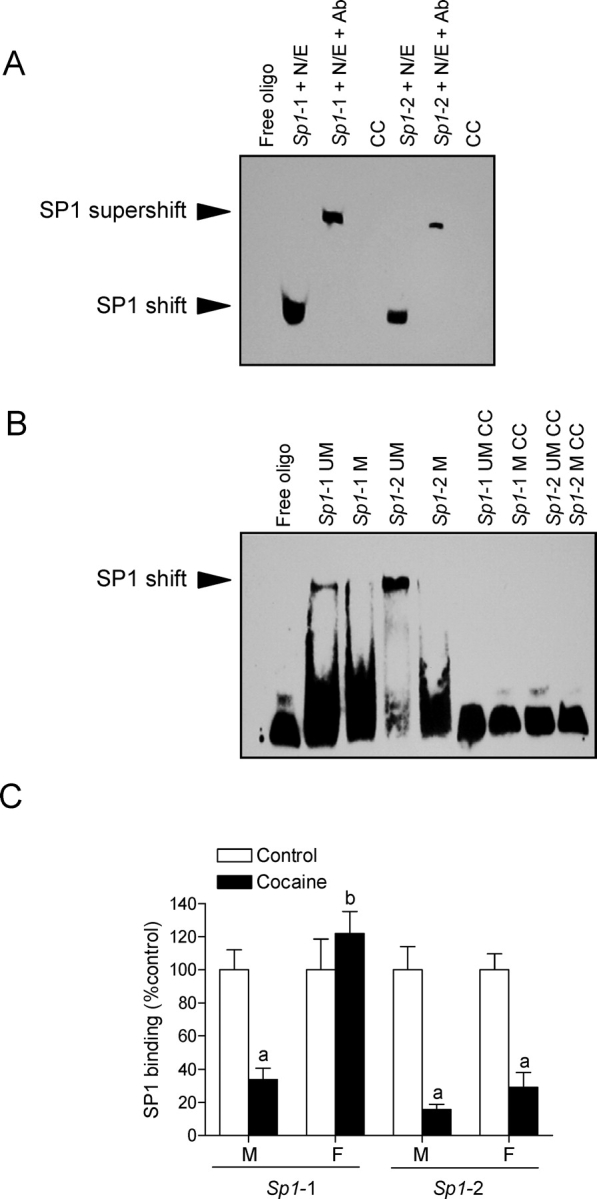FIG. 5.

SP1 binding to unmethylated and methylated Sp1 binding elements. A) Nuclear extracts (N/E) from rat left ventricles were incubated with double-stranded oligonucleotide probes containing the Prkce gene consensus Sp1 binding motif at −346 (Sp1-1) and −268 (Sp1-2), in the absence or presence of the SP1 antibody (Ab). Cold competition (CC) was performed with unlabeled competitor oligonucleotide at a 100-fold molar excess. Free oligo, no nuclear extracts, or recombinant SP1 was added. B) Recombinant SP1 was incubated with double-stranded oligonucleotide probes containing unmethylated (UM) or methylated (M) CpG dinucleotides at the consensus Sp1 binding motif at −346 (Sp1-1) and −268 (Sp1-2). Cold competition was performed with unlabeled competitor oligonucleotide at a 100-fold molar excess. C) Time-dated pregnant Sprague-Dawley rats were administered saline or cocaine (30 mg/kg/day) from Days 15 to 20 of gestational age, and left ventricles were obtained from 3-mo-old male (M) and female (F) offspring. Chromatin extracts prepared from left ventricles were sonicated to produce DNA fragments between 100 and 500 bp in length. Chromatin immunoprecipitation (ChIP) assays were performed using the ChIP-IT kit according to the manufacturer's protocol using anti-SP1 antibody. Antibody-pulled chromatin extracts were used as templates for quantitative real-time PCR using primers flanking the two Sp1 binding elements at −346 and −268 of the rat Prkce promoter. Data are mean ± SEM, n = 6. Data were analyzed by two-way ANOVA for each binding site, with cocaine exposure as one factor and gender as the other. aP < 0.05, cocaine vs. control; bP < 0.05, female vs. male.
